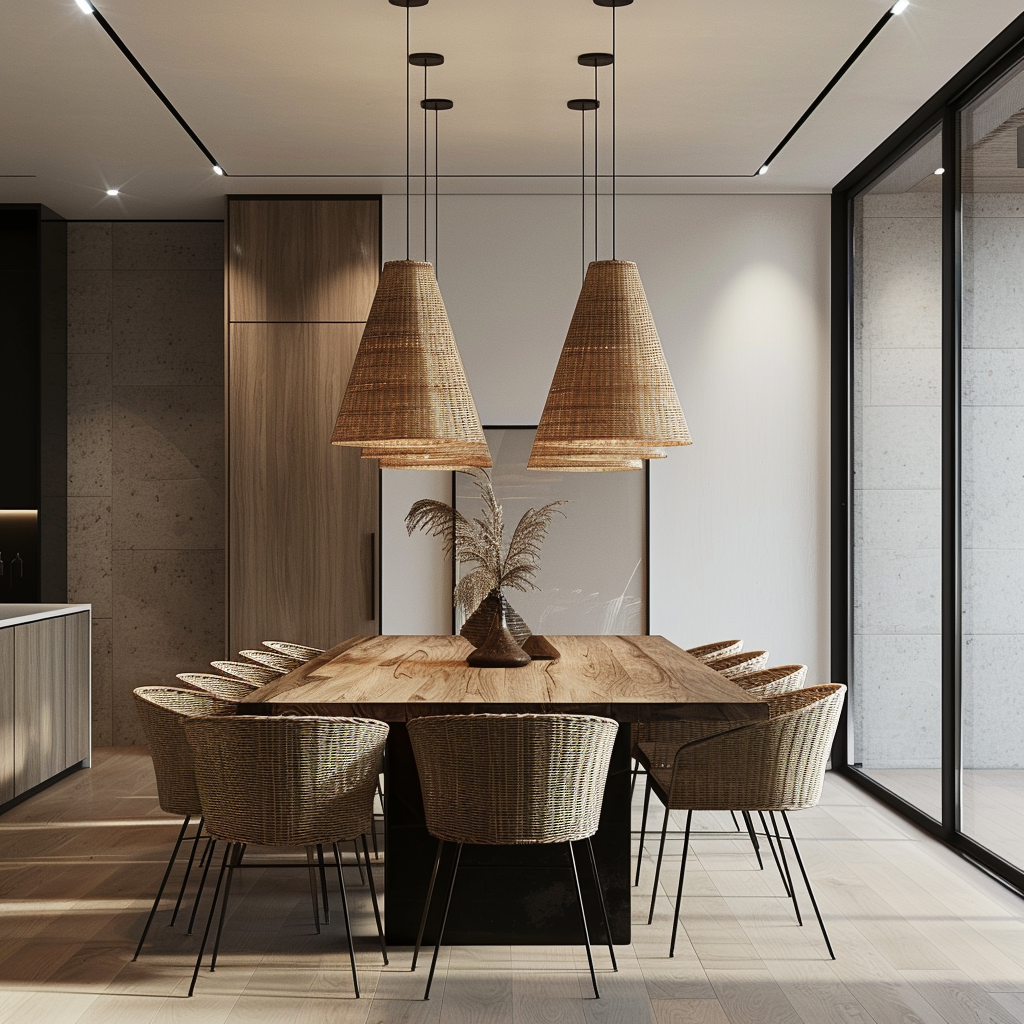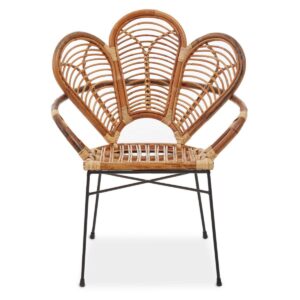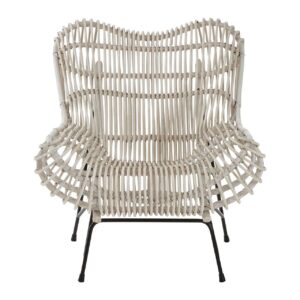In the ever-evolving landscape of interior design, certain materials stand the test of time, weaving themselves into the fabric of décor trends with enduring appeal. Rattan, a versatile and sustainable material, has emerged as a beloved choice in furniture crafting, captivating homeowners, designers, and enthusiasts alike with its natural beauty and timeless elegance.
From humble origins to contemporary chic, the journey of rattan furniture is one of tradition, innovation, and cultural significance. In this in-depth exploration, we delve into the rich history, inherent qualities, and evolving styles of rattan furniture, uncovering the secrets behind its enduring charm and widespread popularity. Whether you’re searching for stylish indoor seating or luxurious outdoor furniture, rattan offers a wealth of possibilities to enhance your living space.
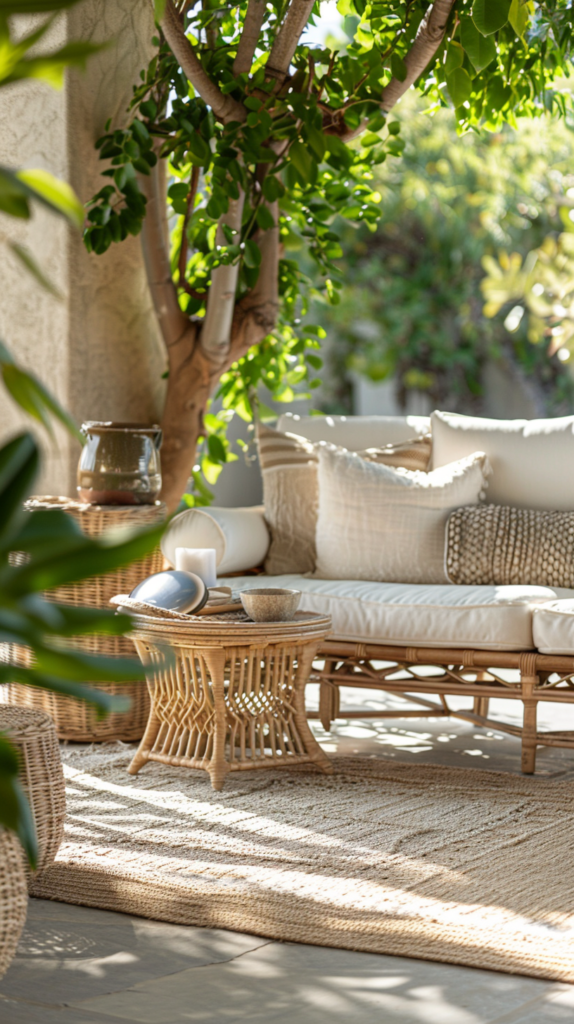
Understanding Rattan and Its Unique Features
Rattan is a type of climbing palm native to tropical regions, primarily found in Southeast Asia, Africa, and Australia. It belongs to the subfamily Calamoideae and is known for its long, slender stems that can grow up to several hundred feet in length. These stems, or canes, are flexible, durable, and lightweight, making rattan an ideal material for various applications, including furniture making, basketry, and handicrafts.
Harvesting rattan involves cutting the stems from the palm trees, after which they are stripped of their thorny outer layer and processed into usable materials. Rattan can be harvested from both wild plants in natural forests and cultivated plantations. Cultivated rattan typically produces more uniform and higher-quality canes, as the plants are tended to and nurtured for optimal growth.
One of the distinguishing characteristics of rattan is its remarkable flexibility and strength, which make it highly adaptable for different purposes. The natural fibers of rattan can be woven, bent, and shaped into intricate patterns and designs, lending a unique aesthetic to rattan furniture and other products. Additionally, rattan is known for its resilience and resistance to wear and tear, making it suitable for both indoor and outdoor use.
Another notable characteristic of rattan is its sustainability and eco-friendliness. Unlike many other materials used in furniture making, rattan is a renewable resource that grows rapidly in its native habitats. Harvesting rattan from well-managed plantations helps support local economies and promotes the preservation of natural ecosystems.
Furthermore, rattan possesses natural weather-resistant properties, making it an excellent choice for outdoor furniture in climates with high humidity or frequent rainfall. Its ability to withstand exposure to the elements without rotting or deteriorating significantly contributes to its longevity and durability.
History of Rattan Furniture
The history of rattan furniture is intertwined with the cultural heritage of the regions where rattan palms grow abundantly, primarily in Southeast Asia. Rattan has been utilized by indigenous communities for centuries, with evidence of its use in furniture and handicrafts dating back to ancient times. In these cultures, rattan was revered not only for its practical qualities but also for its symbolic significance, often associated with themes of nature, sustainability, and community.
In Southeast Asia, particularly in countries like Indonesia, Malaysia, and the Philippines, rattan has been an integral part of traditional craftsmanship for generations. Artisans in these regions have honed their skills in weaving and shaping rattan into intricate designs, passing down their knowledge and techniques through familial and community traditions. Rattan furniture was not just functional but also served as a form of artistic expression, reflecting the cultural motifs, beliefs, and values of the societies that created them.
Among the indigenous peoples of Southeast Asia, rattan furniture held special significance in various aspects of daily life. From simple stools and baskets to elaborate chairs and ceremonial objects, rattan furniture adorned homes, communal spaces, and sacred places, serving practical, social, and spiritual purposes. Its natural beauty and versatility made it a favored material for crafting objects of utility and adornment, showcasing the ingenuity and craftsmanship of local artisans.
Beyond its utilitarian value, rattan furniture also played a role in social and cultural rituals, symbolizing hospitality, status, and community ties. In many indigenous societies, the offering of rattan furniture as gifts or dowries signified goodwill, friendship, and familial bonds. Rattan furniture was also often featured in traditional ceremonies, festivals, and celebrations, where it served as both functional items and decorative elements imbued with cultural significance.
As colonialism and globalization spread across Southeast Asia, the production and trade of rattan furniture evolved to meet changing demands and market trends. While traditional craftsmanship techniques persisted, rattan furniture also adapted to incorporate influences from other cultures, resulting in hybrid styles and designs. Today, rattan furniture continues to be celebrated not only for its aesthetic appeal but also for its connection to the rich cultural heritage of the communities that have cultivated and cherished this versatile material for centuries.
Types of Rattan Furniture
Rattan furniture encompasses a wide range of pieces designed for both indoor and outdoor use, each serving different purposes and catering to various preferences and lifestyles. Here are some of the most common types of rattan furniture, along with details about their features and functions:
1. Rattan Chairs: These come in various styles, including armchairs, lounge chairs, dining chairs, and rocking chairs. They are often characterized by their lightweight yet sturdy frames, which are typically made from rattan poles or woven rattan strands. Rattan chairs may feature cushioned seats and backs for added comfort, and they can be adorned with decorative accents such as braided patterns or intricate weaving techniques.
2. Rattan Sofas and Settees: Rattan sofas and settees provide comfortable seating options for living rooms, sunrooms, or outdoor patios. These pieces typically feature durable rattan frames with plush cushions upholstered in fabric or leather. Rattan sofas and settees come in various sizes and configurations, including single-seaters, two-seaters, and sectional arrangements, allowing for versatile seating arrangements to suit different spaces and preferences.
3. Rattan Tables: Rattan tables are available in a variety of styles, including coffee tables, side tables, dining tables, and bar tables. They may feature rattan frames with glass, wood, or rattan tabletops, offering both functionality and aesthetic appeal. Rattan tables can be used indoors or outdoors, adding a touch of natural elegance to any setting while providing a surface for dining, entertaining, or displaying decorative items.
4. Rattan Beds and Headboards: Rattan beds and headboards bring a touch of rustic charm and tropical flair to bedrooms. These pieces often feature rattan frames with woven rattan panels or intricate detailing, creating a focal point in the room. Rattan beds may be paired with coordinating bedside tables and dressers to complete the look and create a cohesive bedroom ensemble.
5. Rattan Storage Furniture: Rattan storage furniture includes cabinets, chests, dressers, and shelving units designed to provide functional storage solutions while adding style to the space. These pieces may feature rattan accents, such as woven drawers or doors, combined with wood or metal frames for durability and stability. Rattan storage furniture is versatile and can be used in various rooms of the house, from bedrooms and living rooms to entryways and home offices.
6. Outdoor Rattan Furniture: Outdoor rattan furniture is specifically designed to withstand the elements and provide comfortable seating and dining options for outdoor spaces. This category includes patio sets, garden sofas, lounge chairs, dining sets, and sun loungers made from weather-resistant rattan materials. Outdoor rattan furniture may feature UV-resistant cushions and frames treated to resist moisture, mold, and mildew, ensuring longevity and durability in outdoor environments.
These are just a few examples of the diverse range of rattan furniture available, each offering unique features and benefits to suit different needs, preferences, and lifestyles. Whether used indoors or outdoors, rattan furniture adds warmth, texture, and character to any space, creating inviting and stylish environments for relaxation, socializing, and enjoyment.
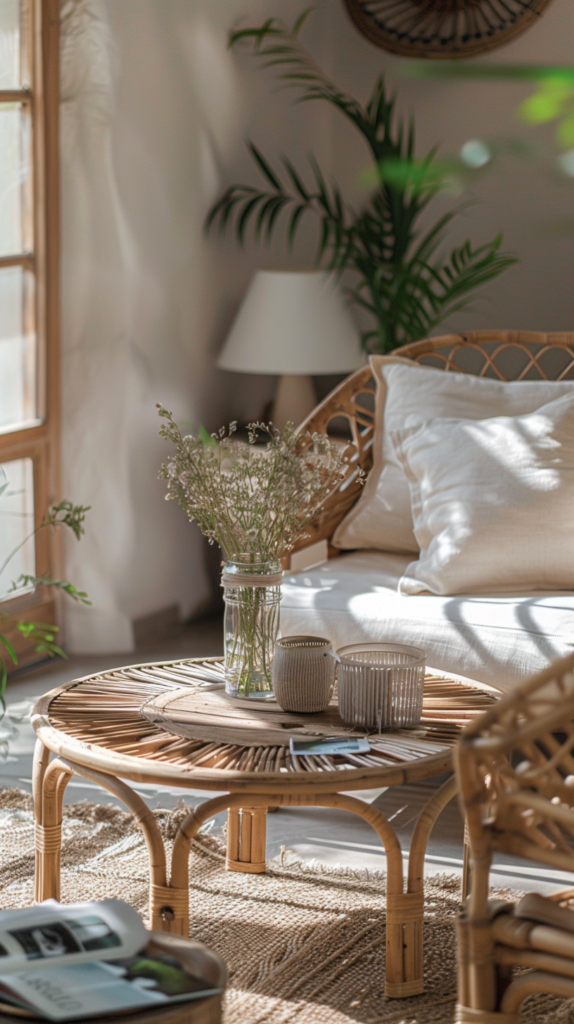
Benefits of Rattan Furniture
The growing popularity of rattan furniture can be attributed to its numerous benefits, which make it an attractive choice for homeowners seeking both style and sustainability in their décor. From its durability and eco-friendly credentials to its natural beauty and comfort, rattan furniture offers a compelling combination of advantages that have contributed to its increasing appeal in modern living spaces. Here’s a detailed break-down:
- Durability and Longevity:
Rattan furniture is renowned for its durability and longevity. Its natural fibers are resilient and can withstand regular use without compromising on quality. Properly maintained rattan furniture can last for many years, making it a wise investment for homeowners.
Lightweight and Versatile: Rattan furniture is lightweight and easy to move around, allowing for effortless rearrangement of indoor and outdoor spaces. Its versatility makes it suitable for various settings, from cozy living rooms to spacious patio areas, offering flexibility in design and layout.
- Eco-friendly and Sustainable:
Rattan is a renewable resource that grows rapidly in its native habitats. Harvesting rattan from well-managed plantations promotes sustainable forestry practices and helps preserve natural ecosystems. Compared to other materials like wood or metal, rattan has a lower environmental impact, making it a eco-friendly choice for conscientious consumers.
- Natural Beauty and Timeless Appeal:
Rattan furniture exudes natural beauty and rustic charm, adding warmth and texture to any space. Its woven patterns and intricate designs showcase the craftsmanship of skilled artisans, creating pieces that are not only functional but also aesthetically pleasing. The timeless appeal of rattan furniture transcends trends, ensuring its enduring popularity in interior and exterior décor.
- Comfort and Ergonomics:
Many rattan furniture pieces, such as chairs and sofas, are designed with comfort in mind. The flexibility of rattan allows for the creation of ergonomic shapes and contours that conform to the body, providing optimal support and relaxation. Cushioned seats and backs further enhance the comfort of rattan furniture, making it ideal for lounging and entertaining.
- Breathability and Allergy-Friendly:
Rattan furniture offers excellent breathability, allowing air to circulate freely through its woven structure. This feature makes rattan furniture a suitable choice for individuals with allergies or sensitivities to synthetic materials, as it reduces the risk of trapping dust, pet dander, and other allergens.
- Cost-effectiveness:
Despite its high-quality craftsmanship and natural appeal, rattan furniture is often more affordable than comparable pieces made from solid wood or metal. This affordability makes rattan furniture accessible to a wide range of consumers, providing an opportunity to incorporate eco-friendly and stylish décor into their homes without breaking the bank.
Choosing the Right Rattan Furniture
Before purchasing rattan furniture, there are several important factors to consider to ensure that you select the right pieces for your needs and preferences.
Firstly, you’ll need to decide between natural or synthetic rattan. Natural rattan, derived from the rattan palm plant, boasts a rustic charm and organic feel that lends a unique character to any space. It’s eco-friendly and sustainable, making it a popular choice among environmentally-conscious consumers. On the other hand, synthetic rattan, typically made from resin or plastic fibers, offers greater durability and weather resistance, making it ideal for outdoor use. Consider your specific requirements and aesthetic preferences when choosing between natural and synthetic rattan.
Next, it’s crucial to evaluate the quality and construction of the rattan furniture you’re considering. Examine the materials used, such as the thickness and strength of the rattan strands or the sturdiness of the frame. High-quality rattan furniture should be tightly woven, with no loose or frayed ends. Pay attention to details such as joints, fasteners, and finishes, as these can impact the durability and longevity of the furniture.
When it comes to style and design, think about how the rattan furniture will complement your existing décor and personal taste. Rattan furniture comes in a variety of styles, from traditional and rustic to modern and contemporary. Consider the design, color, and texture of the rattan as well as any accompanying upholstery or accents. Whether you prefer traditional, contemporary, or eclectic styles, select furniture that enhances the visual appeal of your space, harmonizing with your interior or exterior design scheme, while reflecting your personal taste. Look for unique features or decorative elements that add visual interest and character to the furniture.
Another important consideration is selecting the right size and scale of rattan furniture for your space. Measure the dimensions of the area where you plan to place the furniture, taking into account factors such as clearance space, traffic flow, and other furnishings. Choose rattan furniture pieces that fit proportionally within the room or outdoor area, ensuring a balanced and cohesive look. Avoid overcrowding the space with oversized furniture or selecting pieces that overwhelm the surroundings.
In conclusion, before buying rattan furniture, carefully consider factors such as the choice between natural or synthetic rattan, the quality and construction of the pieces, the style and design that best suits your aesthetic preferences, and selecting the right size and scale for your space. By taking these considerations into account, you can make informed decisions and invest in rattan furniture that enhances the beauty and functionality of your home or outdoor living area.
Challenges and Considerations
Despite its many benefits, rattan furniture is not without its challenges. One common issue is its susceptibility to damage from environmental factors such as humidity, sunlight, and moisture. Prolonged exposure to these elements can cause rattan furniture to fade, warp, or even develop mold or mildew. To mitigate these risks, it’s important to place rattan furniture in well-ventilated areas away from direct sunlight and to regularly clean and treat it with protective coatings or sealants designed for rattan.
Another challenge with rattan furniture is its tendency to attract dust and dirt, which can accumulate in the woven fibers and be difficult to remove. Regular cleaning with a soft brush or vacuum cleaner can help prevent buildup and maintain the appearance of rattan furniture. Additionally, using cushions or covers can protect rattan furniture from dirt and debris, prolonging its lifespan and keeping it looking its best.
Over time, rattan furniture may also develop cracks or breakages, especially in areas that are subjected to frequent use or weight-bearing. While rattan is durable, it’s not indestructible, so it’s important to inspect your furniture regularly for signs of wear and tear. Minor damages can often be repaired using rattan repair kits or by professional craftsmen who specialize in rattan furniture restoration.
Lastly, sourcing high-quality rattan furniture can be a challenge, as not all manufacturers adhere to sustainable and ethical practices. To ensure that you’re purchasing responsibly sourced rattan furniture, look for certifications such as the Forest Stewardship Council (FSC) or inquire about the manufacturer’s commitment to sustainable harvesting and production methods. Additionally, consider supporting local artisans and businesses that prioritize environmental and social responsibility in their rattan furniture production.
Maintenance and Care for Rattan Furniture
Maintaining rattan furniture requires regular care and attention to ensure its longevity and beauty. Here are some tips to help you keep your rattan furniture looking its best:
- Regularly dust your rattan furniture with a soft brush or cloth to remove any accumulated dirt or debris. This simple step helps prevent buildup and keeps the furniture looking clean and well-maintained. For stubborn dirt or stains, use a damp cloth or sponge with mild soap and water to gently clean the surface of the rattan.
- Protect rattan furniture from prolonged exposure to sunlight, which can cause fading and discoloration over time. Position your furniture away from direct sunlight or use curtains, blinds, or awnings to provide shade and minimize UV damage. Additionally, consider applying a UV-resistant coating or sealant to further protect the rattan from sun damage.
- Maintain optimal humidity levels in the environment where your rattan furniture is placed. Excessive humidity can cause rattan to become moldy or mildewed, while low humidity can cause it to dry out and become brittle. Use a humidifier or dehumidifier to regulate humidity levels as needed, especially in areas with fluctuating climate conditions.
- Avoid placing heavy objects or applying excessive pressure on rattan furniture, as this can cause it to warp or break. Use furniture pads or coasters under heavy items to distribute weight evenly and protect the rattan surface. When moving or transporting rattan furniture, lift it carefully and avoid dragging or dragging it across the floor to prevent damage to the legs or joints
- Consider applying a protective finish or wax to seal the rattan and enhance its durability. Choose a product specifically designed for rattan furniture and follow the manufacturer’s instructions for application. This extra layer of protection helps seal the rattan fibers, making them more resistant to moisture, stains, and wear.
By following these maintenance tips, you can keep your rattan furniture in excellent condition for years to come, preserving its natural beauty and extending its lifespan. Regular cleaning, protection from sunlight and humidity, gentle handling, and the use of protective finishes are key to ensuring that your rattan furniture remains a timeless and cherished addition to your home.
In the weaving tapestry of home décor, rattan furniture stands as a thread connecting tradition with innovation, nature with design. As we’ve journeyed through its history, explored its characteristics, and unraveled its challenges and solutions, one thing becomes clear: rattan furniture is more than just pieces of décor. As we embrace the allure of rattan furniture in our homes and outdoor spaces, let us not only revel in its aesthetic appeal but also cherish its rich heritage and eco-friendly ethos. With each piece, we celebrate not just a material, but a story—a story of resilience, ingenuity, and the enduring power of nature to shape the spaces we inhabit.
